I couldn’t believe that 2 years passed so quickly, it was time for my second CJ3 Citation Recurrent Training – CE525S. I completed my initial at ProFlight in December 2013, wrote a blog about the experience, and had flown the CJ3 almost 300 hours in the past 2 years including some great trips to Alaska for business, add my Seaplane rating, and all over the lower 48 states.

Flying the CJ3 over the Florida Panhandle at 45,000 feet (FL450)
Citation Recurrent Training with Tru ProFlight
Since that time ProFlight was acquired by Textron Aviation and their new company – Tru Simulation + Training , which also purchased two simulator manufacturers. Same great program and staff, however the acquisition has allowed them to expand, adding additional pilot and maintenance training courses under Textron Aviation as well as the establishment of a new training center near Tampa Florida. Proflight is now Tru ProFlight Training. Occasionally I also help as an SIC for some clients working on their crew – CE525 – ratings at Tru ProFlight.
NextGen CJ3 Flight Training Device (FTD)
One advantage of being a Tru ProFlight customer is the ability to visit during the year and utilize their Citation CJ3 NextGen Flight Training Device (FTD). While I used that opportunity a few times during the year, I knew that a full recurrent would test my flying abilities and give me a chance to update my skills, especially on Abnormal/Emergency procedures. This FTD is unique among the other FTDs that I’ve used. The ‘cockpit’ couples full tactile experience with many of the knobs and switches a pilot uses in the aircraft (e.g. autopilot, FMSs, trim, flaps, throttle) with touch screens for some other functions. By coupling this capability with full controls, and a wrap around visual system, the pilot experiences almost the same functions as in the aircraft and sim. The feeling is so close to the actual aircraft, that when I trained my wife to land the CJ3 in the NextGen she started to aim for our hangar at Montgomery (MYF) at high speed – I had to pause the FTD before she ran into the CJ3 I fly in real life! I forgot I was in the FTD.
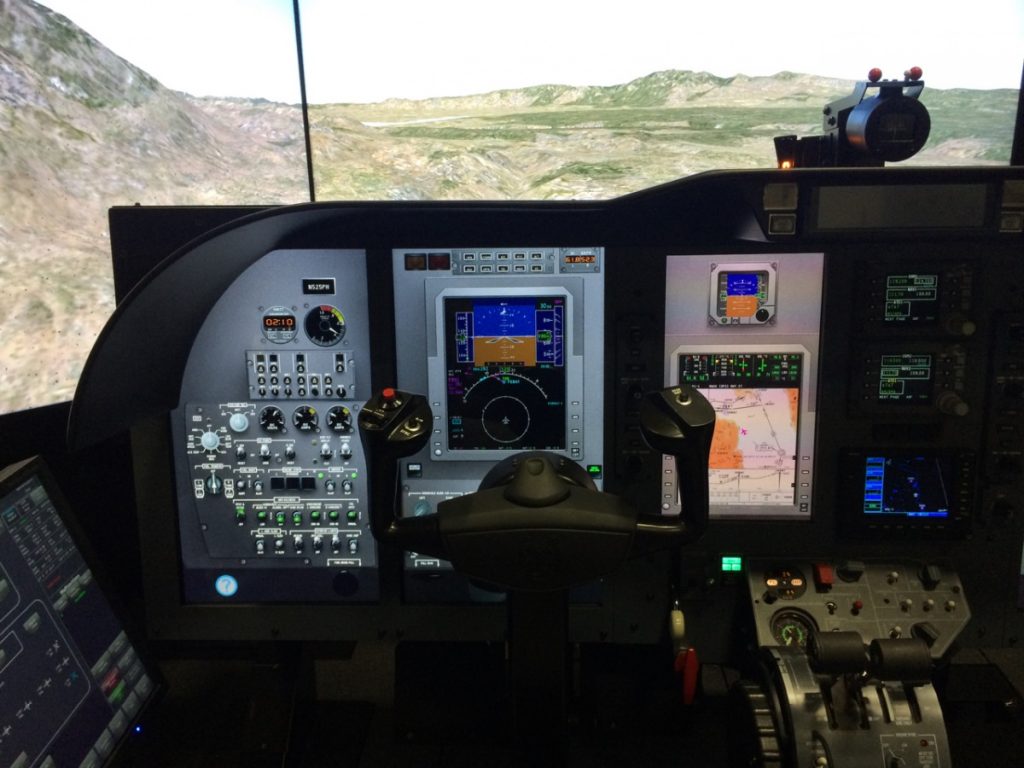
The Tru Proflight CJ3 NextGen FTD for Citation Recurrent Training
In order to fly Pilot In Command (PIC) of a turbojet aircraft, you are required to have completed a flight proficiency check per FAR 61.58 within the previous 12 months in that type (e.g. CE525 for the Citation CJ3). If you have multiple type ratings, you can alternate the required Proficiency Check between models each year, however you must train specifically in each model within 2 years to fly as PIC. Technically I could wait another year since my currency is active in multiple jets, however I believe that training is extremely important, and Tru ProFlight offers a great CJ3 Citation recurrent training program in Carlsbad California, close to my home in San Diego.
Learning Management System (LMS)
The first item you receive after enrolling in the Tru ProFlight Citation CJ3 Recurrent course is a link, and login, to their online LMS. The LMS is divided into a number of chapters, and pages, with a quiz at the completion of each chapter.
Each chapter includes narrative text, audio, and animations for each topics. The animated system diagrams are very cool, offering clients the opportunity to see various operations, e.g. fuel flow, under normal and abnormal conditions. If you are like me, you don’t remember everything about a system when first viewing it, and reviewing abnormal conditions is easy when you can click a valve closed and see the result — all on your computer.
After about 15-20 hours of pre-study using the LMS on your own, when you first visit ProFlight you take a review quiz to complete the ground portion of your Recurrent. With that complete, now the fun starts!
The Simulator
Proflight utilizes some of the latest Level D simulators. The one I used was built by Opinicus, which was also acquired by Textron and is now a business unit of Tru Simulation + Training.
On to the Training Flights
With access to the CJ3 NextGen FTD, I could practice by myself virtually any flight operation while up at Tru ProFlight. An instructor was also available to answer questions, or put me through challenging scenarios in the FTD. One of the great features of the NextGen is that it utilizes much of the same software that is used in the full motion Level D sims with full control feel. In this way a flight in the FTD closely resembles one in the Level D. After some time in the NextGen, the simulator sessions now started.
Chuck Hosmer was my instructor for 2 of the 3 hour sessions. No matter how much you fly, you still learn from flying the sim. Each sim session is preceded with a thorough briefing on the scenario for the session. Tru ProFlight changes the scenarios periodically, which makes it more interesting.
Our first sim session at first seemed easy – depart Aspen-Pitkin County (KASE) and fly to Colorado Springs (KCOS). A short, relaxing, flight in the CJ3 – in normal condition. Then I remembered that nothing is easy in the sim! My instructor had planned a few challenges along the way. The weather at KASE was:
KASE 091255Z 33015KT 2SM -SHRA OVC008 25/10 A3032
Even before starting the engines the ATIS indicated that the crosswind starting limit for the CJ3 (10 KTS) would be exceeded, so first I had to request a tug to turn us into the wind. Exceeding the crosswind or tailwind limits can result in a hot start, exceeding the Interturbine Temperatures (ITT) maximums.
Once that was resolved, I completed the systems check only to find out that my brake anti-skid system was inoperative. A quick call to maintenance (my instructor) resolved the issue and we continued. The KASE weather was IFR which required flying the LINDZ 8 Departure (SID), which was uneventful, but fun flying IFR through the mountains. Cruising over the Rockies my autopilot failed. After going through the Abnormal Checklist for that failure, I could not resolve the problem so it was up to me to fly to KCOS and do the approach.
On the way to KCOS, the ATIS informed me that the glideslope was inoperative on the RWY 35L ILS, the approach I was assigned. Since the weather at KCOS was a ceiling of 400 feet overcast and 1 mile visibility which was below the Minimum Descent Altitude (MDA) for the Localizer, missed approach was probable — my first clue! I didn’t seed the runway at minimums, so it was on to a missed approach. Pickle (Go Around pushed) , Power, Pitch, flaps to approach, gear up at positive rate of climb, FMS set, flaps up at V2+10. All of which occurred quickly.
On the missed approach, I was diverted to my alternate – Denver International (KDEN) and my autopilot miraculously started working! Denver was a good alternate, however the visibility was reported as 1/2 mile, with rain and low overcast of 200 feet. Another clue! The flight to Denver was short and just when I was about to relax, I had an engine fire on the left engine. I had used the LMS to study engine fire procedures, which also included an interactive lesson animating a fire sequence.
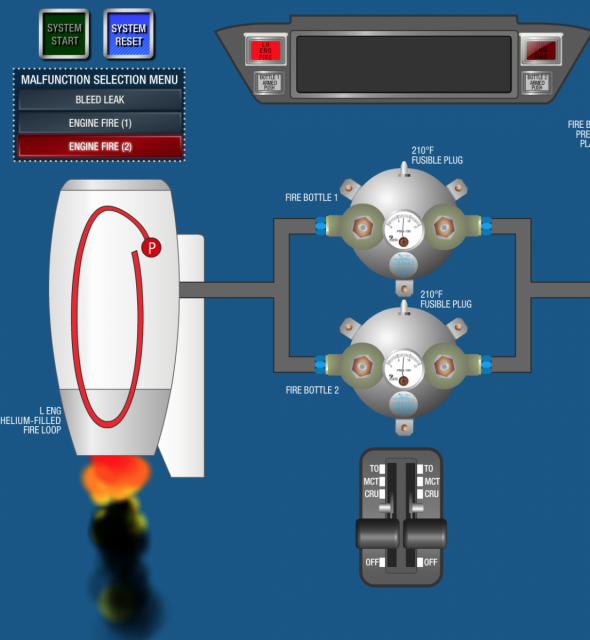
LMS engine fire lesson
In the sim, my first clue was the left engine fire warning light with concurrent loss of engine oil, fuel, and hydraulic pressure as well as failure of the generator.
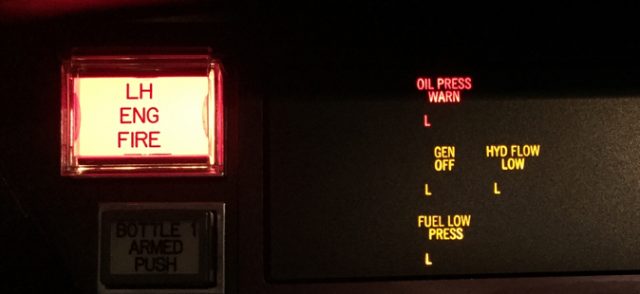
CJ3 left engine fire
Once I confirmed the fire, then secured the engine by pressing the LH ENG Fire light which also closes the fuel and hydraulic valves for that engine and arms the fire extinguisher. After activating the fire extinguisher and completing the checklist – it was back to the ‘usual’. As always, the most important thing to remember if to ‘Fly the Airplane’. A single engine approach in the CJ3 is not difficult as long as you follow the Checklist – flaps set to approach (15 degrees), fly the approach at Vap (approach speed – approximately 8 KTS above Vref), which requires an approximate power setting of 55-60% N1.
Always Assume a Missed Approach
I’m always prepared for a missed approach – VFR or IFR. Possibly the only tricky part flying on one engine is a single engine missed (or takeoff), since you have so much asymmetric thrust which is assisted by the rudder bias system. Another clue! Of course I had to do a single engine missed since an airplane had taxied past the hold line just before I was to land. The missed sequence is Pickle (push the go around button), Power forward, Pitch up – all simultaneously. The flaps are confirmed to be in the approach mode only, gear up at positive rate, set or confirm FMS for the missed, and use a lot of rudder to keep the plane straight. Once you are at a safe altitude, your airspeed at V2 + 10, the remaining flaps can be retracted. Simple!!
I then set up to do a single engine approach to 16R ILS which had better weather. Along the way the autopilot failed, so it was a hand flown single engine ILS to minimums. We had extra time after landing, so I did a VFR takeoff with both engines, for some simple pattern work. You get the picture – another clue! On downwind just before I was going to deploy the flaps – the flaps somehow failed. Slowing down a jet without flaps, or speed brakes (if they also fail) is not easy. You must immediately reduce power and let the plane slow down. When I had practiced it earlier, I was way to fast and it is almost impossible to slow down the jet if you are too fast. Without flaps the approach speed is faster, and of course the required landing distance is substantially greater. The landing distance is also increased if the speed brakes are also inoperative. If you have full hydraulic failure, the gear will also not extend normally – but with everything else happening this is a minor inconvenience since the manual extension is simple. The visuals on the Proflight sim (built by Tru Simulation) are outstanding. Here is an example of a VFR approach at one of the airports I ‘flew’ into during training.
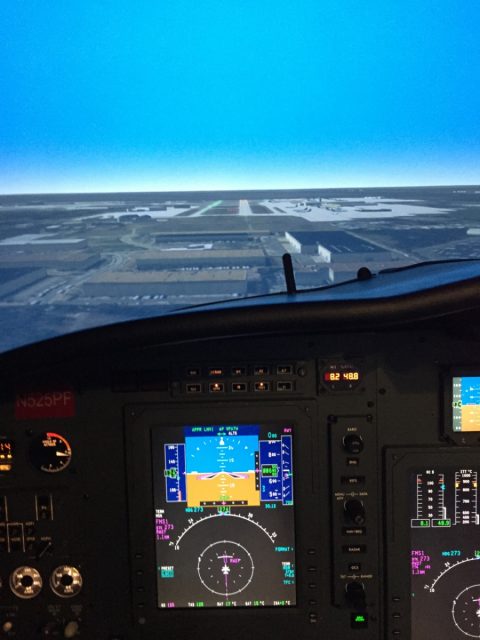
On final at Memphis in the CJ3 simulator – beautiful VFR day
Windshear ! Windshear ! Windshear !
After landing, we still had time, so it was off on a departure into significant windshear with the Proline 21 system announcing something I already knew 🙂 One trick I use is to rotate at a slightly higher speed if I suspect windshear or gusts and might also consider a no flap takeoff if runway length permits. When encountering the windshear, I pitched up to almost the stick pusher and didn’t change the aircraft configuration. It is tempting to change the flaps, if deployed, and it usually isn’t a good idea! The CJ3 is very powerful and while the takeoff was turbulent and the verbal annunciators were warning ‘Windshear’ we were able to finally make it above the critical phase.
After a landing, with all of the systems working (a surprise) it was time for the debrief. Nearly 3 hours had passed in the sim, and it seemed we were only in there a fraction of the time. The debrief is extremely useful, reviewing what I did correctly and also to identify areas for improvement.
Finishing Up
My next sim session was full of activity. Early on in the session I did the required air work: steep turns, stalls – including high altitude at FL450, emergency descents. Also added for variety was PFD failures, then an IFR approach to Memphis (KMEM). Since we can compress a lot of training in the session, we followed with a brake failure on takeoff, low visibility taxi using SMGCS.
Just when everything was going smoothly, with just a few emergencies. I did another takeoff with an engine failure at V1 (decision speed). As with the single engine missed approach, the challenge is using enough compensating rudder. Once you remember that, then it is almost easy to fly the plane! Actually it is a lot of work, but then that is why we train, and train some more.
Proficiency Check
For the 61.58 requirements, you can either do a progressive check where the required tasks are spread out over 2 or 3 sim sessions, or elect to do a single check session. I elected the later at Tru ProFlight to give me more time to prepare.
This check was done with Chris Clevering, one of the Tru ProFlight designated examiners. While similar to the type rating check ride, it is a little more relaxed – at least for me. Chris did an excellent briefing, evaluating my system knowledge as well as my comprehension about operating procedures. It was then into the simulator to spend another few hours crammed full of airwork, emergencies, and even some ‘normal’ flying. After flying some much time dealing with abnormal events, it was odd sometimes to fly an airplane with all of the systems working!!
After the 2 simulator sessions, the evaluation was basically a review of what I had learned – a lot of single engine flying, systems failures, and low visibility operations. Just to end on a high note – I had a departure in windshear and after recovering from that, a dual hydraulic failure, with a resultant manual gear extension, and of course flap failure to a full stop. All in all, a very robust Citation recurrent training program designed to keep you safe.
Train Like You Fly and Fly Like You Train
It is so important to continue flight training, that it should be ingrained in every pilot’s psyche! I cannot stress this enough. With almost 10,000 flight hours I never fail to learn something new (or improve my skills) when I train. It makes you a better pilot, keeps your mind sharp, and is just plain fun. The day I no longer train is the day I will stop flying (which I hope will be a very, very long time from now).

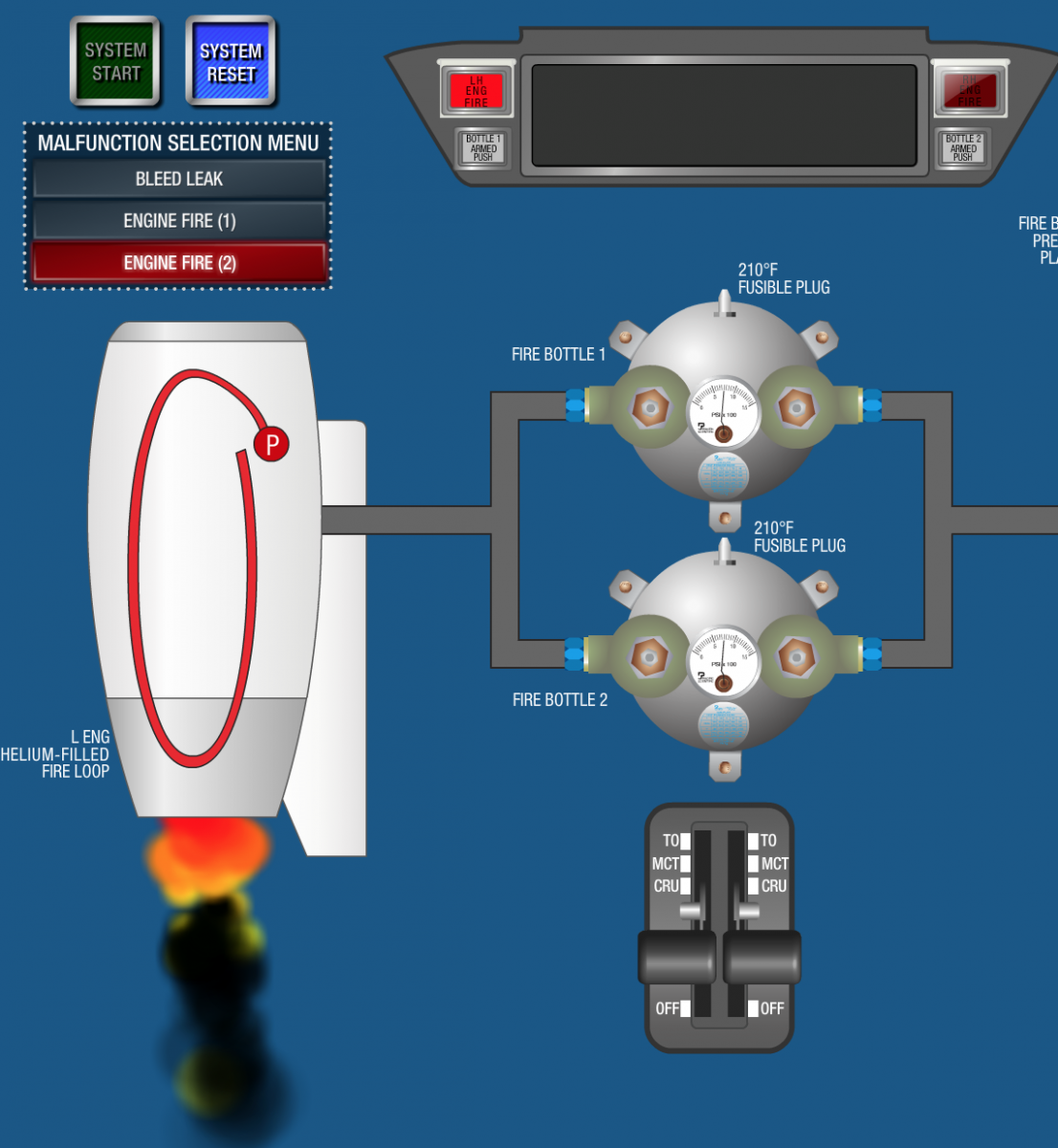
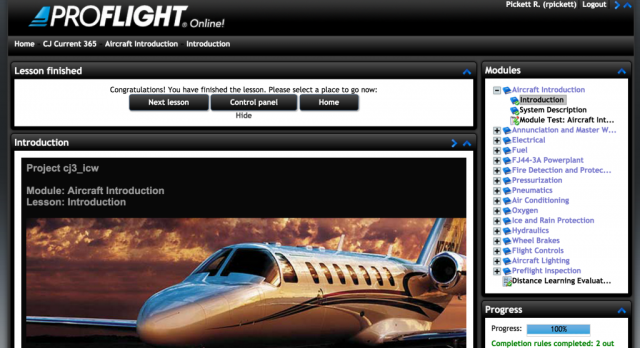
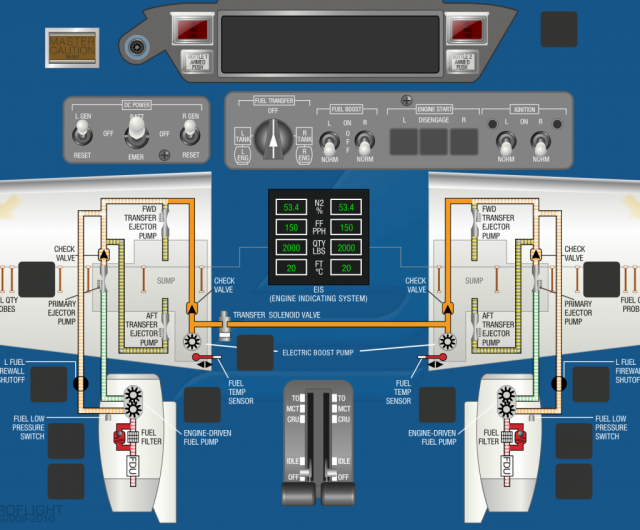
I’m interested in CJ3 recurrent training.